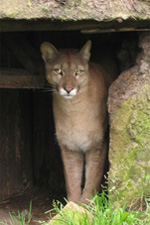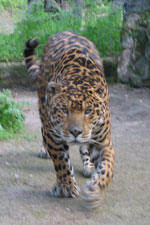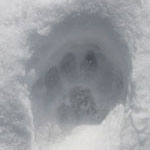Research

 |
This
research project has two main objectives: (a) to study the reproductive physiology and develop reproductive biotechnologies for South American felines, and (b) to develop a genetic resource bank for these species. This initiative will allow the preservation of current genetic diversity and will facilitate the exchange of genetic material between populations. Felines are particularly vulnerable to a number of threats. First, their home ranges are very large, so they are highly susceptible to habitat reduction or fragmentation. Second, they depend on their prey and are heavily influenced by changes in their densities. Third, they tend to live in low density populations, so any reduction in the number of individuals has a great impact on population dynamics. Finally, they have been the target of intensive hunting due to the economic value of their fur, and to fear of potential attacks on domestic species or humans. |
 |
The
genetic resource bank will be located at two sites: at the “Zoo
de Buenos Aires” for samples collected in South America,
and at the “Museo Nacional de Ciencias Naturales (CSIC)”
for samples collected in Europe. The group leaders involved are: • Montserrat Gomendio, Museo Nacional de Ciencias Naturales (CSIC), Madrid. • Eduardo Roldán, Museo Nacional de Ciencias Naturales (CSIC), Madrid. • Julián Garde, Universidad de Castilla-La Mancha, Albacete. |

|
•
Luis Jácome, Fundación Bioandina Argentina, Buenos
Aires. The
objetives of the project were presented at a press conference
in Buenos Aires on 9 September 2005. For more information, click
here.
We produce a bi-monthly bulletin with information on the South-American
felid species, the conservation status of these species, and activities
developed by our group. |
| Locations
of the GRB |
Participating institutions | ||||
Back to projects